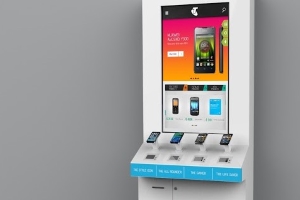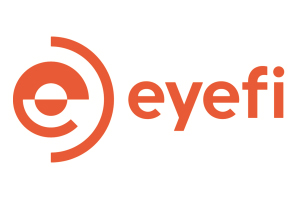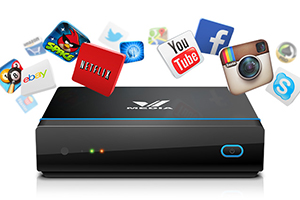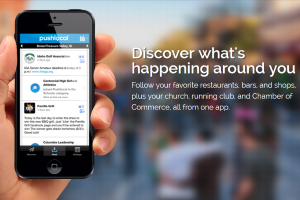Consumer Business and Retail Industry — Outsourcing Essentials
The unlimited opportunities proffered by the digital marketplace can feel dazzling. But independent from the ever-increasing number of online sales, payments are just one of the many functions an eCommerce system can optimize in a B2C environment. In fact, today’s customers appreciate seamless experiences across the board, from effective searches to easy, secure ordering.
Gathering and analyzing data on customer behaviour patterns is another “must”. This data can be aggregated in specific eCommerce metrics — for example, to determine the cost of user acquisition, the conversion rate, or the average order value.
Luckily, cutting-edge technology continues to make things easier for both customers and retailers. When choosing an IT outsourcing company for a new or revamped shopping experience, it’s useful to remember that your chosen provider should have proven eCommerce experience, be able to understand the specifics of different segments, and be proficient in reading metrics. Only a company possessing these qualities will ensure that your eCommerce site reflects your business’s goals and values.
Achieve strong omnichannel presence in customer’s lives
Over the past few years, internet traffic from mobile devices has skyrocketed. According to CNN Money, 55% of all U.S. internet traffic is now mobile (47% from apps and 8% from mobile browsers), and per The Guardian, 52% of UK mobile traffic is related to e-retail.
To reach and retain customers, e-retailers focus on three specific channels: eCommerce websites, mobile-optimized websites and mCommerce applications. However, since customers traditionally enjoy touching and evaluating a product before buying, online purchasing is not the only scenario a serious eCommerce system should support. A typical example is when a user looks at a product online before visiting a nearby shop, where the product is available, reserved, and ready for a “test run”. The opposite situation also holds true, with customers seeing a product in a real shop before ordering it online.
Every customer expects the buying process to be engaging and instantaneous. This requirement is met with a POS self-service system, which may vary from a touchscreen device able to look up special orders, to a full-featured self-service system with scanning, payment, and even wrapping functions.
Among the most innovative solutions available to customers with mobile devices are augmented reality (AR) and beacon technologies (iBeacon). These technologies allow the integration of real-time computer graphics and sounds into a real-world environment, creating virtual objects and information.
One example of an AR mobile application is an app that provides real-time data display regarding the buildings, restaurants and businesses surrounding the user. This application type uses the phone’s camera, GPS capabilities, and compass to gather and process data related to the user’s location.
Other applications intended to create realistic in-store experiences use iBeacon — a new, more precise technology than GPS. iBeacon consists of a positioning system with a low-power in-store transmitter that enables brand/product data to be displayed on a customer’s mobile device. Imagine, for example, an app that can visualize photorealistic furniture in different environments, or an app that shows you how a dress looks on you without needing to try it on.
Such solutions are extremely powerful for retailers. Not only does a brand become more interwoven into its customers’ lives, it’s actually able to guide their choices.
Choose your technology wisely
There is more than one “right” technology for an eCommerce system, and each technology may exhibit differences in system functionality, performance, and security level. This is where outsourcing development becomes advantageous over in-house development, since it’s extremely unlikely that your local team is specialized in a broad range of technologies. However, for outsourced teams, broad specialization is the rule — and insightful analysis of your needs, along with expert guidance, are an outsourcer’s bread and butter.
When planning your development approach, one of the first decisions you’ll face is: should you start from scratch, or use an existing solution? Starting from scratch means tailoring the eCommerce system to your business, down to the last detail. Every feature will be custom, and unnecessary features will be discarded. Mid-sized and large businesses usually prefer this path.
Using an existing solution means tailoring your business processes to the system, whether it be open source or proprietary. This option is usually more affordable, but not as flexible or secure. Specific to open source systems, it must be noted that the code is inspected on a regular basis by hackers looking for security weaknesses, which might be fatal for a business if, for example, its customers’ financial data were leaked. Meanwhile, proprietary solution providers can’t rely on the effort of an open source community, which means they’re usually even slower when it comes to addressing security concerns.
The most common ready-made eCommerce solutions are PHP-based: Magento, Wordpress + the WooCommerce plugin, Joomla! + Virtuemart, and Symfony with Sylius integration. Other common solutions are .NET-based systems such as AbleCommerce, Sana Commerce and nopCommerce. Shopify, built on Ruby on Rails, is also a contender. Most of these solutions support mobile devices and can integrate mobile payments.
As mentioned earlier, ready-made solutions can have serious limitations. The most serious, aside from security issues, are usually related to functions, performance and size. For example, Magento is used to build simple e-stores featuring a storefront, a cart and an ordering system. Magento doesn’t perform well with big inventories or strong web traffic. Also, if you require social media features, advanced filtering, loyalty programs, targeting, and coupons, a custom solution would certainly be a better choice.
Independent of your choice between ready-made systems and custom solutions, you should keep in mind that the system architecture always comes first. You need both an independent backend and a frontend, meaning that data and the presentation of said data are two entirely separate things.
Ensure payment and personal data security
Implementing a secure payment system is a very serious matter. Since customer data is stored, processed and transmitted, the way it is handled represents a great responsibility for the retailer. Everything must be encrypted, and the CPI DSS requirement (an industry standard) must be met when planning and building an eCommerce system. Moreover, if online payments are not your core business, it’s better to work with tried-and-tested payment systems that experienced developers can assist you with.
User synchronization across devices (so that, for example, an order can begin on a PC and end on an iPad) and a solid “user roles workflow” are two more critically important components.
Sibers’ experience in consumer business and retail
Sibers has experience developing eCommerce solutions since 2000. Our team has built an enormous amount of online stores, using both ready-made and custom solutions. We know all of the latest technologies, and the pros and cons of each, like the back of our hand.
In addition to building the systems themselves, we’ve also developed tools for deep product customization: online and desktop product design software, apps featuring push notifications, loyalty programs solutions, POS systems, and many more.
Peruse our Case Studies and learn more about our ability to develop top-notch technology solutions for the consumer business.
Featured case studies developed for Consumer business and retail industry
Need a e-commerce development team?
Request a quoteWhitepapers
- Building MVP for Startups
- Architecture: Why Does it Matter?
- Functionality vs. Classy: The “90/90 Percent” App Rule
- The Essentials of Custom Development for Printing Businesses
- IT Projects: It Takes Two To Meet A Deadline
- E-Learning Evolution: Custom E-Learning Development Trends
- Getting iOS App Crash Logs
- You Asked, We Answered: Testing, Debugging, and What on Earth Does “Best Practices” Really Mean?
- The Limits of Perfection: Where Pixel-perfectionists Need to Stop and Think
- Software cost estimation: What factors are key in IT project estimates?
- Why go outsource?
- DIY: When Does It Make Sense?










